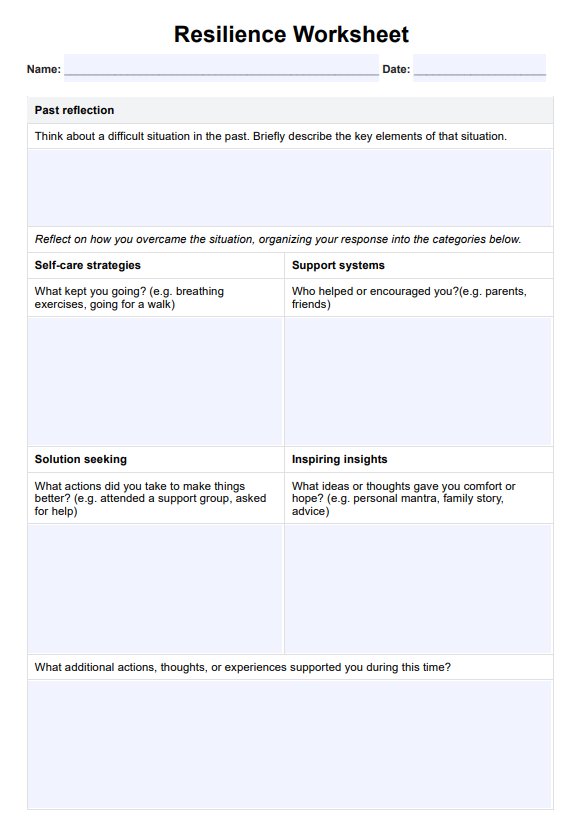What is a Resilience Worksheet?
A Resilience Worksheet is a resource used to help foster an adaptive and constructive mindset toward challenging situations, setbacks, and stressors. It is useful for social workers, psychologists, and individuals in individual counseling and can be a powerful tool for helping individuals engage in self-reflection and gain insight into adaptive cognitive processes.
Resilience is a dynamic psychological construct that can be cultivated and strengthened over time. It encompasses one's capacity to navigate adversity, including the ability to bounce back from a challenging situation or setback and manage stressful situations. Resilience is not about avoiding stress or eliminating hardships but cultivating the mental and emotional fortitude to overcome challenges.
Resilience building is a foundational focus of positive psychology. It involves a unique interplay of cognitive, emotional, and behavioral factors. These include emotional awareness and regulation and fostering a growth mindset or resilient thinking. Resilient individuals have a strong sense of self-efficacy and exhibit a flexible cognitive style, reframing challenging situations as opportunities for growth.
On a behavioral level, resilience manifests as adaptive coping and problem-solving skills, such as seeking social support, practicing self-care, or engaging in activities that bring joy and fulfillment. A network of supportive and meaningful relationships provides a buffer during challenging times. Resilience-building activities help people leverage these relationships for emotional support, guidance, and encouragement.
This comprehensive resource can enhance resilience by developing self-awareness, fostering positive relationships, embracing change, and helping people learn from successes and setbacks. Resilience Worksheets strengthen the efficacy of psychological treatment by actively engaging the individual in improving their self-compassion, self-discovery, and emotional awareness to foster resilience.












